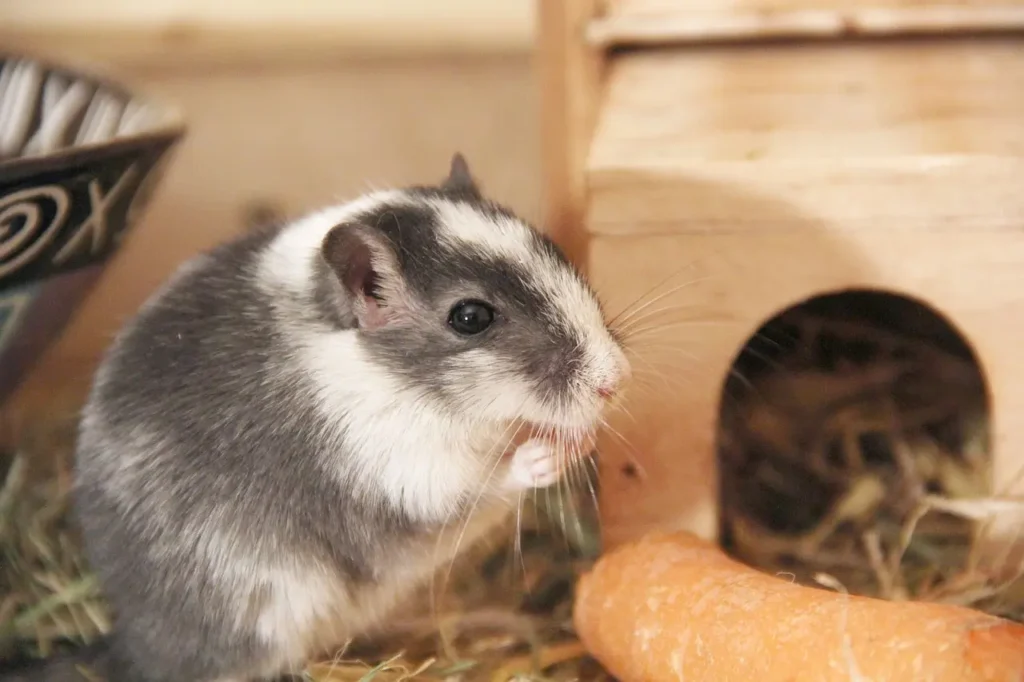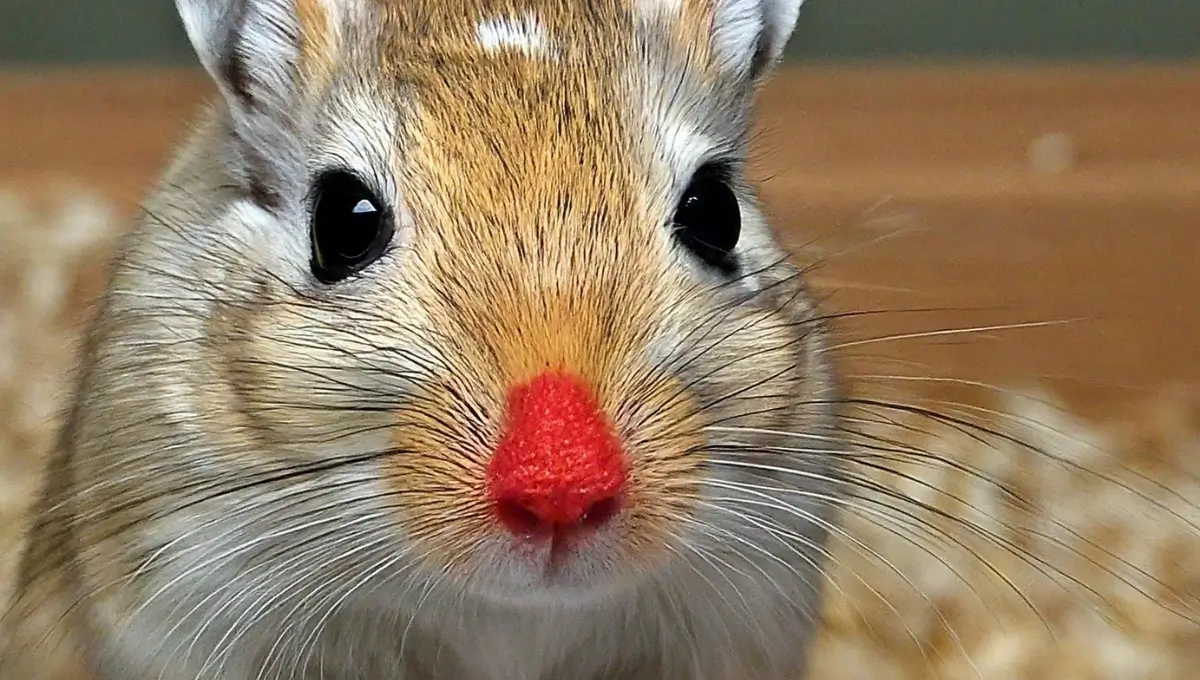Gerbils are curious and energetic pets, known for their playful nature and ease of care. However, like all pets, they can encounter health issues, one of which might manifest as a red nose. This condition, while seemingly minor, can indicate underlying health concerns that require attention.
In this post, we will look at the most common reasons of a red nose in gerbils, how to detect and treat them, and how to prevent them so your furry companion stays happy and healthy.
Common Causes of a Red Nose in Gerbils
Allergies and Bedding
One of the primary reasons a gerbil’s nose might turn red is due to allergies, often stemming from their bedding. Dusty materials or certain types of wood shavings, such as pine or cedar, can irritate their nasal passages, leading to redness, itching, and discomfort.
It’s crucial to choose bedding that is dust-free and safe for gerbils, such as paper-based products or aspen shavings, to minimize the risk of allergic reactions.
Environmental Factors
The environment in which your gerbil lives can significantly impact its health. High humidity and extreme temperatures can cause stress and discomfort, leading to nasal irritation.
Additionally, gerbils are social creatures, and overcrowding or inadequate space can increase stress levels, exacerbating nasal issues. Maintaining a stable, comfortable environment is key to preventing health problems.
Health Conditions
Several health conditions can cause a gerbil’s nose to become red, including:
- Porphyrin Deposits: Stress and nutritional deficiencies can lead to the accumulation of porphyrin, a pigment found in gerbil tears, around the nose and eyes. This can cause irritation and redness, often mistaken for blood.
- Nasal Dermatitis: Also known as “sore nose,” this condition results from various factors, including trauma, stress, and bacterial infections. Symptoms include redness, hair loss around the nose, and frequent scratching.
- Upper Respiratory Infections: Similar to a cold in humans, respiratory infections in gerbils can cause a runny, red nose alongside other symptoms like sneezing and lethargy.
Diagnosis and Treatment of Red Nose in Gerbils

Recognizing Symptoms
Early detection is crucial for effective treatment. Apart from a red nose, look out for signs such as excessive scratching, hair loss around the nose, sneezing, and changes in behavior. If you notice these symptoms, it’s important to consult a veterinarian experienced in small animal care for a proper diagnosis.
Treatment Options
Treatment varies based on the underlying cause but often includes:
- Home Care: For mild cases, cleaning the affected area with a damp cloth and applying a small amount of pet-safe ointment can provide relief. Ensure the living space is clean, well-ventilated, and free from stressors.
- Veterinary Care: More severe cases, especially those involving infections, may require antibiotics or other medications prescribed by a vet. Follow the treatment plan closely and monitor your gerbil for improvements or any adverse reactions.
Addressing a red nose in gerbils involves understanding the potential causes, recognizing symptoms early, and providing appropriate care. By ensuring a clean, stress-free environment and seeking veterinary advice when necessary, you can help keep your gerbil healthy and comfortable.
Remember, preventive measures are always better than treatment, so pay close attention to your pet’s living conditions and health to avoid issues before they arise.
Also read: Do Gerbils Get Wet Tail?
Preventing and Managing a Red Nose in Gerbils
Ensuring your gerbil remains healthy and happy involves more than just treating issues as they arise; prevention is key. By understanding how to manage and prevent nasal irritation, you can keep your gerbil in top health and avoid the stress and discomfort associated with a red nose.
Improving Living Conditions
The right environment plays a crucial role in preventing nasal issues in gerbils. Here are some tips to create a safe and comfortable habitat:
- Choose the Right Bedding: Opt for dust-free, absorbent bedding like paper-based products or aspen shavings. Avoid pine and cedar, as they can cause respiratory and skin irritation.
- Maintain Proper Humidity and Temperature: Gerbils thrive in environments with low humidity (below 50%) and temperatures between 65°F and 75°F. Use a hygrometer to monitor humidity levels and adjust your room’s temperature accordingly.
- Minimize Stress: Provide ample space for exploration and exercise, and ensure your gerbil has social interaction with cage mates if appropriate. Avoid sudden changes in their environment to reduce stress.
Nutritional Support and Hygiene
A balanced diet and clean living conditions are essential for preventing health issues:
- Balanced Diet: Ensure your gerbil’s diet includes a mix of gerbil-specific pellets, fresh fruits, and vegetables to support overall health and immune function.
- Regular Cleaning: Clean your gerbil’s cage at least once a week and spot-clean areas of frequent use daily. This helps prevent the buildup of harmful bacteria that can cause infections.
Also read: How to Tell if Your Gerbil is Dying?
FAQs
What causes a gerbil’s nose to turn red?
A gerbil’s nose may turn red due to allergies, environmental stress, bedding irritants, nutritional deficiencies, or health issues like nasal dermatitis and respiratory infections. Identifying the exact cause requires observing additional symptoms and possibly consulting a veterinarian for a precise diagnosis.
Can a red nose in gerbils heal on its own?
Mild cases of a red nose, especially those caused by temporary irritants or stress, can heal on their own with improved care. However, persistent or severe symptoms necessitate veterinary intervention to address underlying health issues effectively.
How can I prevent my gerbil’s nose from getting red?
Preventing a red nose involves using dust-free bedding, maintaining a stable and stress-free environment, providing a balanced diet, and keeping the living area clean. Regularly monitoring your gerbil’s health and behavior also plays a crucial role in prevention.
Is a red nose in gerbils contagious to other pets?
A red nose itself is not contagious, but if it’s symptomatic of an underlying contagious condition, such as a respiratory infection, it could potentially spread to other gerbils. It’s important to isolate affected individuals and seek veterinary care to prevent the spread of illness.
Conclusion
A red nose in gerbils, while often a sign of minor irritation, can sometimes indicate more serious health issues. By understanding the common causes, recognizing symptoms early, and implementing effective treatment and preventive measures, you can ensure your gerbil leads a healthy, comfortable life.
Remember, a clean environment, proper diet, and regular veterinary care are the cornerstones of good gerbil health. If you ever have concerns about your pet’s well-being, don’t hesitate to seek professional advice. Your attention and care can make all the difference in your gerbil’s quality of life.











